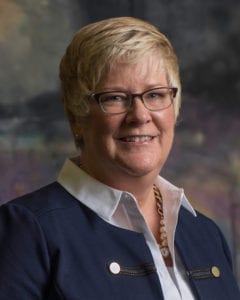by Fern Sanford, President, Fern Sanford Creative

During the COVID-19 pandemic, words like unprecedented and pivot became part of our fundraising vocabulary. At the DMFA, we also used ‘evolving’ quite a bit, because we saw many new opportunities and venues for our educational programming, including the extension of our educational resources to include a more robust focus on mid-level giving.
Former DMFA president Val Vierengel approached Jann Schultz, who has been facilitating the Mid-Level Giving Group (MLG) about working together. It was clear from the beginning that this would be a valuable partnership as many of our members work both in annual giving and mid-level giving.
MLG formed out of the need to better monitor trends in these critical programs. There are partners who do peer benchmarking for the mass-market audience, but no one was doing that for mid-level. “Mid-level giving was starting to be a ‘thing’ for quite a few organizations and always came up as a topic in the mass marketing benchmarking meetings,” says Karen Barr of Save the Children and DMFA board member. “During a conference, a few of us came up with the idea of starting a mid-level giving group and here we are seven years later.”
The first benchmarking summit was held in 2015. “The first meeting was pretty informal,” says Jann Schultz, who was with Project HOPE at the time and is now a consultant with Multiple Strategies and a DMFA board member. “We gathered for a day and a half to talk through our programs. It was just discussion, not actual benchmarking, but it was extraordinarily invaluable.”
Discussions evolved over time and the group met annually to discuss strategies: who has been successful, what challenges members of the group are facing, situations group members encountered, such as educating new executive leadership.
As buzz spread about what MLG was doing, more organizations wanted to join. Jann, Karen, and others in the group could see the value of expanding, but running an all-volunteer organization without an independent infrastructure was growing harder each year. And while MLG wanted to maintain its core group, they saw they could provide a service to other non-profits by offering mentoring and partnering with organizations that don’t have mid-level programs, or “farm teams” as Jann puts it. To do this and have a true summit where multiple groups get together, MLG would need help.
That’s where the DMFA comes in. We already have the framework in place to offer educational programs, as well as the technology, professional management, and tools to organize a growing MLG. This past summer, the idea was proposed to the DMFA and it was received with overwhelming support.
“The DMFA offers the opportunity for MLG to be part of an organization that offers a wide array of educational resources to their members and ability to hear from sponsors that offer services that we leverage in our programs,” says Karen.
The original MLG group has become the MLG Benchmarking Legacy Group, which held its first DMFA coordinated meeting this past May. We are also developing a second group called the Contributing Mid-Level Benchmarking Group, and hope to form a third group if there is enough interest.
“Across these groups, we plan to have Lunch and Learns, webinars, topic specific conversations, and expanded opportunities to network and interconnect,” says Jann. If your organization has an existing midlevel program and wants more information about our expanding mid-level groups, contact [email protected]. But all DMFA members will have the opportunity to learn about MLG’s work, so keep a look out for future communications.

